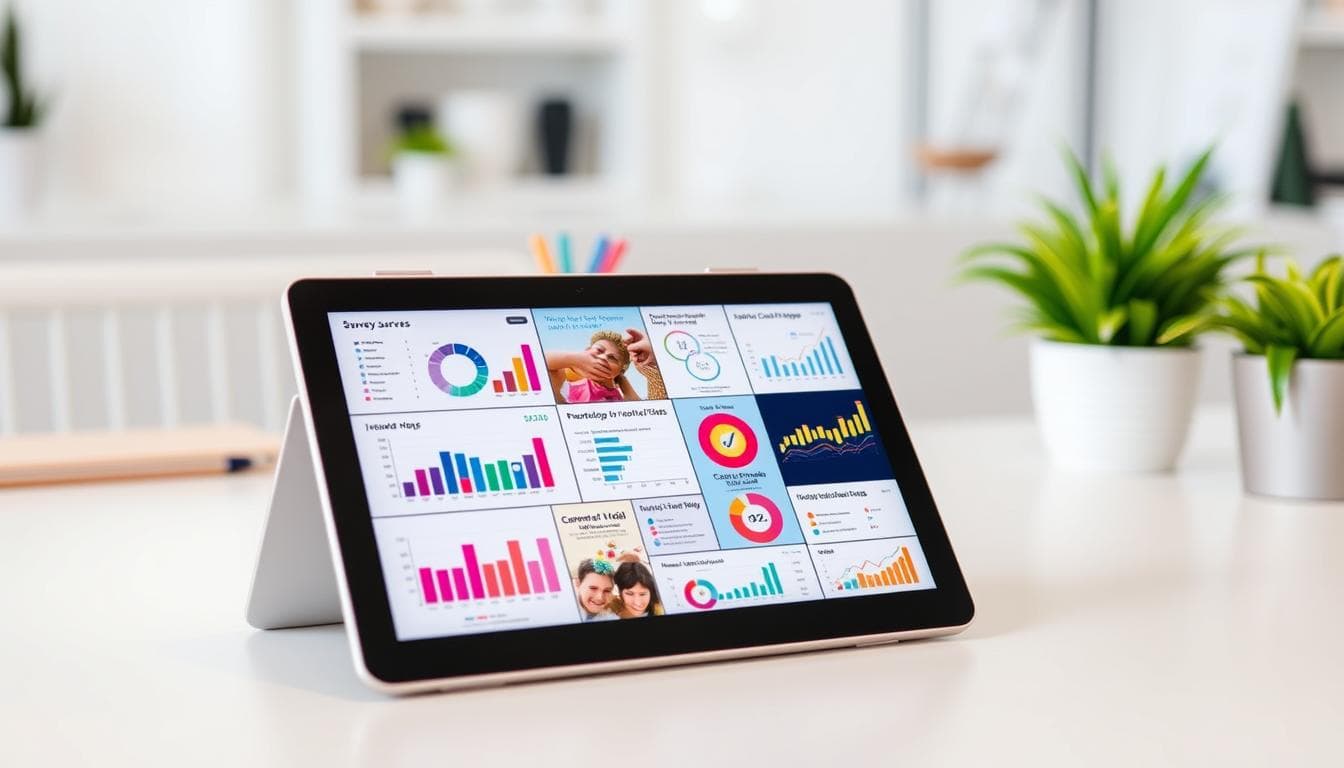Survey Images: Visual Data Collection Made Simple
Staff Writer • December 30, 2024 • Uncategorized, marketing, survey

Visual surveys have changed how businesses gather and analyze data. They make surveys more fun, interactive, and full of insight. Image-based surveys are great for market research, product testing, and getting customer feedback.
Tools like SurveyMonkey and Jotform make creating surveys easy. They have drag-and-drop features and let you add images. You can also resize images automatically and make them look good on any device. Adding captions helps explain the images better.
Key Takeaways
- Visual surveys enhance data collection and engagement by making surveys more interactive and visually appealing
- Image-based surveys can increase completion rates and provide clearer insights for market research, product testing, and customer feedback
- Easy-to-use survey builders like SurveyMonkey and Jotform offer seamless integration of images, with features like automatic resizing and mobile optimization
- Incorporating images and visual elements into surveys can lead to more accurate and insightful data collection
- Visual surveys are applicable across various industries, from market research and UX testing to employee training and scientific research
Understanding Visual Survey Data Collection Fundamentals
Visual surveys are changing how we collect data. They use image annotation and computer vision for crowdsourcing. Let's explore the different types of visual survey questions, their benefits, and the tools needed to make them engaging.
Types of Visual Survey Questions
Visual survey questions vary, each asking for different answers. Here are a few examples:
- Image choice: People pick images to show their likes or opinions.
- Click maps: Users mark areas in an image that interest them.
- Rating scales with visual elements: People rate things using emojis or sliders.
Benefits of Image-Based Surveys
Image-based surveys have many benefits. They include:
- More engagement: Surveys with images grab people's attention, leading to better data.
- Better communication: Images help explain complex ideas clearly.
- More accurate answers: Visual cues help get more detailed and accurate feedback.
Essential Tools for Creating Visual Surveys
To make great visual surveys, you need the right tools. Platforms like Jotform and SurveyMonkey have features to help. They include:
- Conditional logic: Changes the survey based on answers.
- Mobile optimization: Works well on all devices.
- Easy sharing options: Makes sharing and collecting data simple.
These tools help you make surveys that are fun and give valuable insights.
Survey Images: Best Practices and Implementation
Visual elements are key in data-driven decision making. They make survey tools more effective. Best practices in image classification, recognition, and analysis are crucial. ????
Use high-quality, relevant visuals to clarify questions and engage respondents. Add captions for context and better data analysis. Use images for tasks like ad testing and logo evaluation. ????
For website feedback, use click maps to see how people interact with your content. GIFs can grab attention and get emotional responses. ????
Make sure images are mobile-friendly and the right size for a smooth survey. Use heat maps to show click data in a clear way. Balance visual appeal with survey length to keep respondents interested. ????
| Benefit | Description |
|---|---|
| Increased Engagement | Images can make surveys more engaging and increase completion rates. |
| Higher Response Rates | Surveys with images tend to get more responses. |
| Multiple Choice with Images | Choosing from images instead of text makes the process more fun. |
| Emotional Response | Emoticons or visual cues can capture respondents' feelings, providing valuable data. |
| Accessibility | Alternative text for images ensures screen reader users can understand the content. |
By following these best practices, you can improve your survey experience. This will lead to higher engagement and valuable insights through visual data analysis. ????
https://www.youtube.com/watch?v=Bxa4Qr_A-AI
Conclusion
Visual surveys have become key tools for collecting data. They make it easier for businesses to get accurate and useful feedback. This is true for market research and even getting opinions from employees.
Thanks to easy-to-use platforms and proven methods, making good visual surveys is now simpler. This has opened up new ways to collect data through images.
As technology gets better, we can expect even more advanced visual survey techniques and image-based data collection. This will lead to even more exciting ways to design and analyze surveys. It will help businesses make better choices and grow in a sustainable way.
Using visuals in surveys can make the whole process better. It can make people more interested and help businesses get the insights they need. The future of surveys is all about visuals, and the possibilities are endless.
FAQ
What are the different types of visual survey questions?
Visual survey questions include image choice, click maps, and rating scales with pictures.
What are the benefits of image-based surveys?
Image-based surveys boost engagement and make ideas clearer. They also lead to more precise answers.
What are some essential tools for creating visual surveys?
Key tools for visual surveys are Jotform and SurveyMonkey. They offer features like conditional logic and mobile optimization.
What are the best practices for using survey images?
Use high-quality, relevant images that help clarify questions. Add captions for context. Make sure images work well on mobile devices.
How can visual surveys enhance data collection and engagement?
Visual surveys make surveys more fun and interactive. This leads to more accurate and useful data.